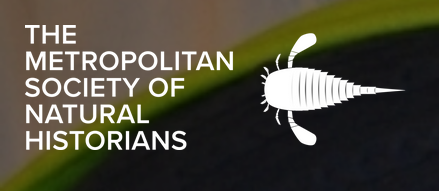On Saturday, September 23rd, the MSNH ventured to Big Brook in Monmouth County, New Jersey to look for fossils of the late Cretaceous coastal marine fauna, which are found at the well-known Lagerstätte deposit. Carl Mehling, senior museum technician in the division of paleontology at the American Museum on Natural History, generously led the trip and shared his expertise and enthusiasm for this remarkable fossil site. This was a family-fun event and participants included 10 young budding paleontologists and their families from the Bronx YMCA, whose participation was partly made possible by the Society for the Study of Evolution Small Grants Program for Local and Regional Outreach Promoting the Understanding of Evolutionary Biology. At the parking lot, we were greeted by a bucolic scenery, and followed Carl through a forest down to Big Brook. It did not take long to convince all of us to step into the shadowy stream and start sifting through the gravel for various vertebrate fossils with sieves Carl provided. Initially, rocks had to be distinguished from fossils (“that’s a genuine rock”), but it did not take long until some of us, and eventually all of us, found various shark and fish teeth (including goblin shark (Scapanorhynchus texanus), sawfish (Ischyhiza mira), as well as bony fishes like Enchodus ferox, pieces of oyster shells, and belemnites (Belemnitella americana). Children and adults alike went into the water to sift with great enthusiasm and excitement not knowing what the next patch of gravel might bring.
Carl told us that the fossils are about 72 million years old, and are a snapshot on how the coastal marine environment might have looked like back at this time. He also showed us shark coprolites, i.e. fossilized shark dung, which have spiral imprints on the outside (coming from the special shape of shark intestines), which he found on that day – who would have known! With an ever growing enthusiasm, more gravel was sifted, and a few lucky members were able to find snail shell imprints, as well as Devonian corals, which might have been brought here by glaciers from Northern New Jersey. We spent several more hours, and met with a group of Rutgers geology undergraduates who arrived there along with their professor to collect as well. Once our pockets were filled with teeth and other bones, corals and oysters, as well as one arrowhead, which was found by one of our youngest attendees, we were ready to leave, however, only to go back there again next year!
To view more photos from this event, visit our gallery. All photo credit goes to Maurice Chen.
Carl Mehling has been at the American Museum of Natural History since 1990 and currently cares for the world's largest collection of dinosaur fossils, plus other reptiles, early synapsids, and early tetrapods. He is interested in all aspects of paleontology, especially fringe areas like bizarre modes of preservation, anomalous discoveries, and oddities within the history of paleontology. Carl collects fossils of all kinds, globally, and writes about scholarly and popular pieces of fossils.




